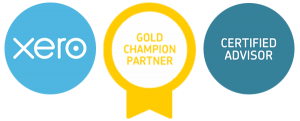


Email marketing converts
With a return on investment of nearly 4500% and nearly 4 billion users, (OptinMonster, 2018) email marketing is one of the best ways a small business can engage with their customers.
Based on research done by the GlobalWebIndex in 2018, it found that 58% of internet users open their email first thing in the morning.
The first thing over half of us are doing in the morning is opening up and reading emails.
With larger businesses sending out at least one email a week and a strong case behind the use of email, it’s concerning that many small businesses do not utilise this form of marketing.
But it’s also understandable why they don’t.
Resource and knowledge
Unlike larger businesses, many small businesses do not have a dedicated in-house marketer. Someone who can craft and send these emails out.
As with the majority of small businesses, this task falls to the business owner. Most business owners do not have marketing experience or the time to send out well crafted emails, so it’s all too easy for this powerful marketing technique to be overlooked.
It’s easy to send a quick newsletter, but harder to engage an audience.
With different methods, softwares and ideas, it becomes all too easy for a small business owner to become overwhelmed, not knowing where to start. In this article we’ll run through exactly where to begin and how to start engaging customers & prospects through the use of email.
Pick your platform
The most important part about email marketing is choosing the right platform for you. This is where you’ll store email addresses and send out content from. There are a few different options out there, with the most user friendly being Mailchimp and Aweber.
Mailchimp is easy to set up and comes with multiple features, from creating different audience groups to building landing pages to capture email addresses. It’s very user friendly and makes sending emails to large audiences easy.
The best part about the product is the fact it’s free up to a certain level of usage. Meaning you can get a feel for the product before committing.
Aweber, used by some big email players such as Paul mort, is very similar to mailchimp. Aweber is designed for small business email marketing and automation. Very similar to mailchimp, Aweber lets users automate email sending, set up easy lead capture landing pages and has great support.
Both of these platforms are built with the user in mind. They are easy to use, come with great support and both offer a ‘freemium’ usage level. Meaning you can try out both platforms before parting with any money.
The next step is to get a feel for which one suits you best and then go from there.
Build your plan
While sending out emails in a scattergun approach may see some results, a well planned approach will come out trumps every time.
Planning is not just about the when you’re going to send these emails, it’s also about the why, how and what.
What are your emails meant to achieve?
How are they going to be written?
Why are you sending them?
These are some key questions to answer, but before doing that, it’s important to work on your business’s tone of voice. This should be built based on your company’s branding and approach to customers. If you have a formal tone of voice, then sending a ‘chatty’ email may not be the best approach.
Once you’ve got your tone of voice, it’s time to answer the questions below. Answering the questions below will leave you with a blueprint plan for sending your emails.
Once you’ve answered these questions you’ll have the foundations for your emails. You should know who you’re going to send the emails to but most importantly why.
What’s the goal of the email?
Make sure your emails always have a ‘call to action’. Such as a link to check out your latest blog, join a webinar or download the latest brochure. Whenever sending an email, always make sure there is a call to action.
Build your database
Without any email address you’ve got no one to engage with, so it’s important to build your database.
Your database will be one of the most important assets to use moving forward and it’s important to keep this information secure. Whilst Aweber and Mailchimp will be able to store data, it’s worth looking into a CRM (customer relationships management) system.
When it comes to building your database the best place is to start with your current customers. Most customers will have given you consent to send them emails and it’s the quickest way to build up your database. Simply sending a ‘join our world famous newsletter email list’ email will generate some traction.
When building up your database you’ll need to have both good content and calls to action. One of the best ways to capture an email address is to offer something in exchange. For example, an ebook…
Take a personal trainer for example. A personal trainer could invest some time into creating a ‘5 ways to control your cravings’ ebook and put this on their website. Now when visitors come to their website, they’ll have an option to ‘Get the 5 ways to control your cravings ebook’ in exchange for their email address.
Other great places to capture emails are at point of sale, adding a “can we email you’ tick box” and adding an email capture box to the end of blog posts. Mailchimp also has a great feature that will generate a ‘subscribe to our emails’ pop up for blog posts.
Invest some time thinking about the different contact points both prospects and customers have with your business and build in calls to action that require the individual to offer up their email address.
Monitor your results and offer value
Once the platform is in place, the plan is ready and customers are signed up, it’s time to start sending emails.
When emails are being sent, it then becomes important to watch and manage engagement. Some emails will engage very differently to others and it’s important to use the data from your platform, as well as asking receivers of your email what they do and don’t like. This feedback will help to develop your emails quicker than anything else.
*Do not get disheartened when people unsubscribe. It’s just not for them*
Sometimes people unsubscribe or don’t connect with your emails because they are too long or short. Aiming for 400-500 words per email is a great place to start, with no more than 1-2 calls to action.
Once you’ve started sending it’s important to keep a track of how many emails it takes for a customer to take action. Once you know this figure, you can work at lowering it.
The most important part about sending emails is to always offer value. We receive so many emails and it becomes a mind numbing task of filtering out the offers and spam.
Offer value by answering common customer problems, sharing insights and make sure they are written to a good standard.
Mayz accountancy
Mayz accountancy is founded on the goal of helping small businesses thrive, by offering insights and support, not just the numbers. Through our blogs, client meetings and more, we’re helping more and more businesses to succeed.
To see if Mayz accountancy can help your business, fill the form below and let’s start the conversation.
